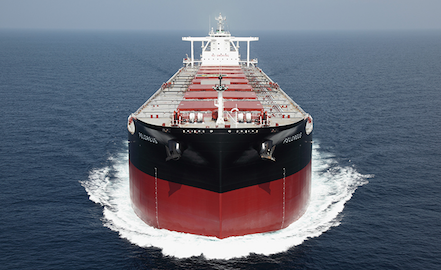Renewed confidence for cape owners

Capesizes have settled above $30,000 per day this month with an increasing amount of analysts suggesting the good times are here to stay for the rest of 2020.
Cleaves Securities’s latest 309-page quarterly report has dry bulk as its top sector pick, citing very strong Chinese demand for dry bulk as the economy is normalising and authorities are adding stimuli.
“Chinese steel production reached a new all-time-high in May, and inventories of steel and iron ore have fallen rapidly. With Brazil finally ramping up iron ore exports from early June, earnings have surged. We believe 2H20E could be very strong, and see consecutive annual gains at least until 2023E,” Cleaves stated.
The dark days of the first five months of the year have been replaced with renewed confidence among cape owners, brokers Intermodal stated in its latest weekly report, describing the “enhanced psychology” providing the market with the “steam” needed to move further ahead.
“Looking at owner’s ideas, it is clear that they are more confident to exert resistance T/C average rates at higher levels day by day,” Intermodal suggested.
Breakwave Advisors are similarly bullish on short-term prospects, albeit with the caveat of increased volatility.
“The near-term outlook still looks promising, yet care is needed given the significant move in spot rates. We expect the second half of 2020 to see Capesize rates trading in a range of 15,000-45,000. This is wide, but not unheard of. We also expect the 2H average Capesize rate to exceed last years’ level (~26,000/day), which means freight futures for the second half are still cheap, in our view (currently ~22,000/day),” the American company predicted this week.
Braemar ACM noted the growing cape congestion at Chinese ports in recent days on bad weather and increased import volumes.The volume of capesize tonnage waiting at Chinese ports jumped to over 16m dwt last week, the highest level in over two years according to AIS data from Refinitiv.
Over July so far Braemar ACM has recorded an average of 15.2m dwt of capacity waiting, 41% higher than average congestion during this period over 2015-19 and 33% higher than last month’s average.
This is adding to the ongoing squeeze to supply of ships in the Pacific.
“Heavy seasonal rains are reportedly slowing the rate that incoming vessels can be discharged, but the queues are also in part down to China’s enormous purchases of iron ore over the past few weeks, some of which would otherwise be heading to countries which have cut back their imports, such as Japan and South Korea,” Braemar ACM noted in a dry bulk update.
